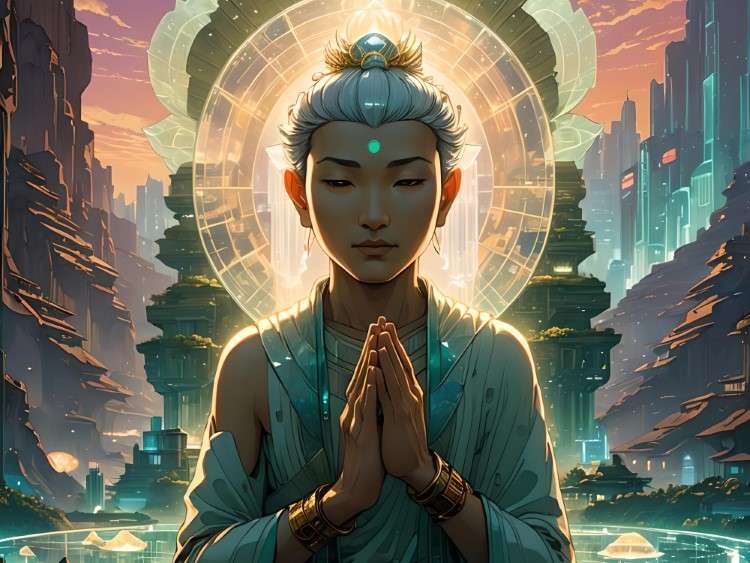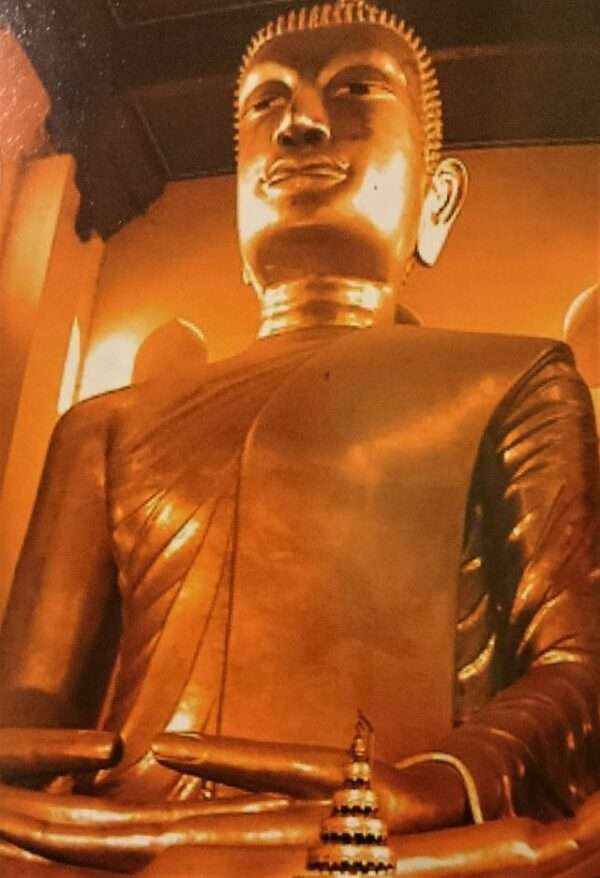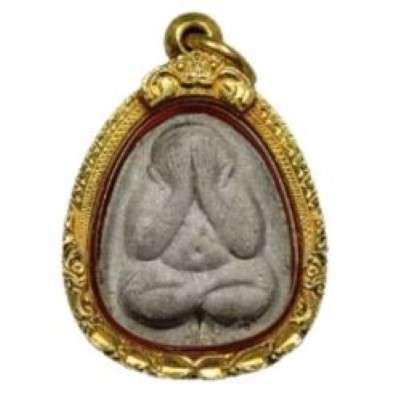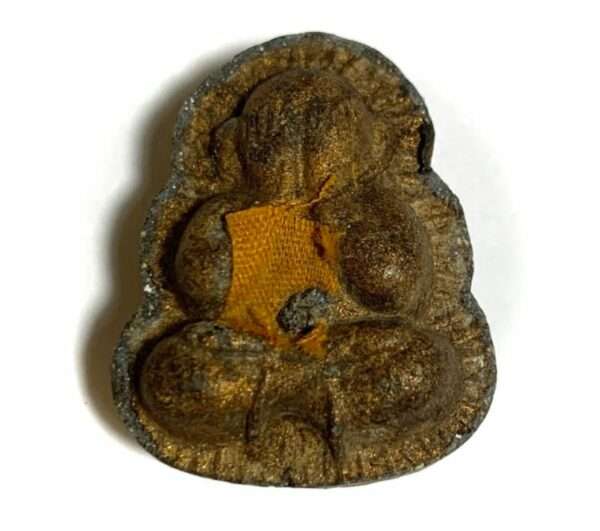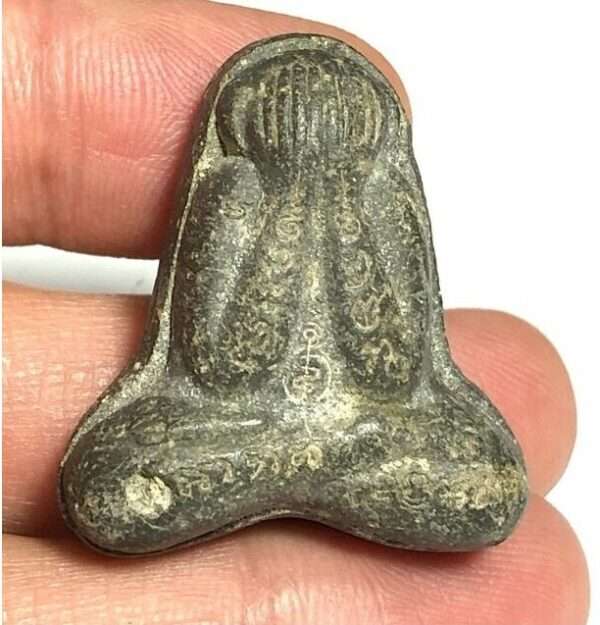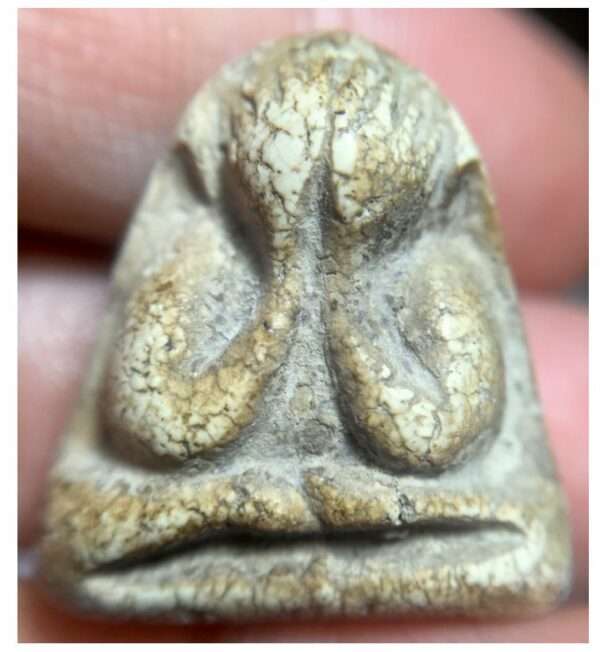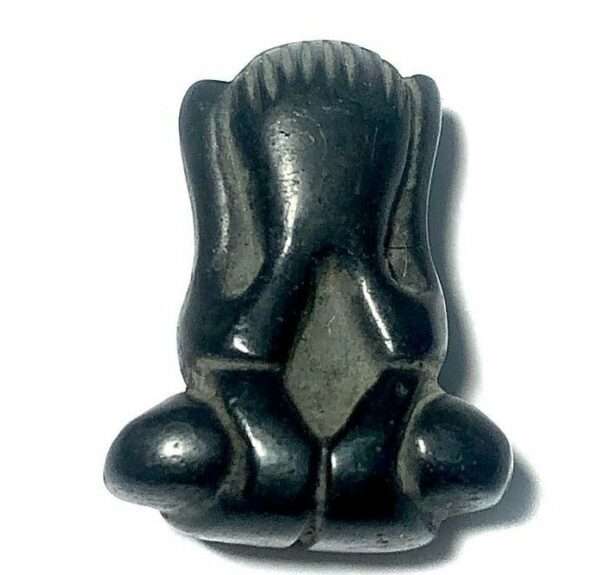Extinguishing of Sensual Craving through Perception leading to the Temporary Cessation of Suffering
Nirodha, a Pali term translating to “cessation” or “extinction,” represents the pinnacle of Buddhist spiritual pursuit. It signifies the complete extinguishing of craving and desire, the root causes of suffering (dukkha) according to the Four Noble Truths. This cessation is not merely a temporary absence of longing; it’s a permanent liberation from the cycle of conditioned existence (samsara) marked by suffering. Attaining Nirodha leads to Nibbana (Nirvana in Sanskrit), a state of perfect peace, unconditioned happiness, and freedom from all forms of suffering.
Nibbana is often described as an indescribable state beyond conceptualization, but some traditions use metaphors, to convey its essence. Imagine a flame utterly extinguished, leaving no embers, no heat, not even the memory of its existence – that’s the nature of Nirodha in relation to craving.
Above; Pra Luang Por To Pra Maha Putta Pim Buddha Statue at Wat Gaes Chaiyo Temple, in Amng Tong, Thailand.
Thailand’s Pra Pidta Amulet’s connection with Nirodha
Phra Pidta amulets, revered in Theravada Buddhist traditions of Southeast Asia, particularly Thailand, embody the ideal of Nirodha. These amulets are also known as ‘Pra Putta Jao Ham Tugkh’ (Buddha forbidding suffering), and are believed to deflect any onslaughts in life that bring suffering. Pra Pid Ta type Thai amulets, typically depict the Buddha, in a seated meditative posture with his robe draped over one shoulder, concealing his eyes with his hands (also seen with multi armed versions covering all orifices). This posture symbolizes the Buddha’s perfect abandonment of, and non-attachment to sensual desires, and his selfless equanimity, a state beyond worldly concerns and desires. The concealed orifices with his hands further represent the Buddha’s complete mastery over his mind – his external cravings and aversions have been extinguished, leaving him in a state of perfect stillness.
Mahayana Buddhism delves deeper into the concept of Nirodha, viewing it as the antithesis of Samsara, the cycle of birth, death, and rebirth driven by unfulfilled desires. For those who comprehend this truth, liberation (Nirvana) transcends all dualities and limitations, including the very concept of liberation itself. In this context, Phra Pidta amulets transcend their role as mere protective charms and become potent symbols of ultimate liberation. Owning and venerating such an amulet serves as a constant reminder of the ultimate goal of Buddhist practice – the complete cessation of suffering through the extinguishment of craving.
The path towards Nirodha is outlined in the Noble Eightfold Path, a practical guide for cultivating ethical conduct (sila), mental discipline (samadhi), and wisdom (panna). Following this path involves right understanding, right intention, right speech, right action, right livelihood, right effort, right mindfulness, and right concentration. Each element reinforces the others, gradually weakening the hold of craving and strengthening the mind’s capacity for peace and clarity.
Meditation (Dhyana/Jhana/Zen) plays a crucial role in achieving Nirodha. Through sustained meditation practice, the practitioner cultivates deep states of mental absorption (Jhana). The fourth level of formless Jhana (Arupa Jhana in Thai etymology) is considered essential for attaining Nirodha. In this state, the meditator transcends sensory experience entirely, focusing solely on a refined mental object. While in Arupa Jhana, the mind experiences a profound sense of peace and equanimity, a foretaste of the liberation offered by Nirodha. However, this state is not permanent, and continued practice is necessary to achieve lasting liberation.
Beyond the practices outlined above, Dhamma knowledge – the teachings of the Buddha – serves as the foundation for the path towards Nirodha. By understanding the Four Noble Truths, the nature of reality (anatta), and the impermanent nature of all phenomena (anicca), the practitioner cultivates a sense of dispassion and detachment from worldly desires. This weakens the hold of craving and allows the mind to cultivate the qualities necessary for Nirodha – equanimity, wisdom, and compassion.
The journey towards Nirodha is a demanding yet transformative one. It requires dedication, discipline, and a genuine desire for liberation from suffering. Phra Pidta amulets serve as potent reminders of this ultimate goal, offering encouragement and inspiration to practitioners on the path. While the path may be long and arduous, the promise of Nirodha – a state of unshakable peace and freedom – makes it a worthwhile pursuit for all who yearn for liberation from suffering.
